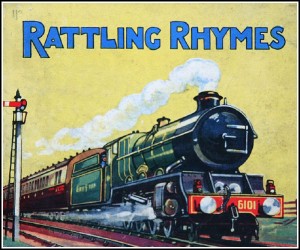 Ask anyone to list some characteristics of songs, and they’ll say “Songs rhyme.” Although this isn’t always true, rhyming is a major reason why people love to sing. Rhymes are fun, and they help us remember lyrics.
Ask anyone to list some characteristics of songs, and they’ll say “Songs rhyme.” Although this isn’t always true, rhyming is a major reason why people love to sing. Rhymes are fun, and they help us remember lyrics.
Today we’ll look at the major types of rhyme – perfect rhyme and imperfect rhyme.
First, here are three things to keep in mind throughout post:
- The meaning of your song is more important than the rhymes. Don’t force a line to rhyme at the expense of the song’s message.
- Your last line is the “punch line” – it’s important to end this line with a strong word rather than a weak one, even if the weak one would give you a perfect rhyme.
- On a related note, try to rhyme your most important words. This means you’ll have to be willing to write imperfect rhymes, which we’ll define below. For example, “God” is an important word but there aren’t many perfect rhymes for it – especially if you want to avoid the words that have been too well trod as a rhyme for God.
Types Of Rhyme: Perfect and Imperfect
Perfect Rhyme: When most people think of “rhyme,” they think of pairs of words like “true/blue” or “cat/hat.” This kind of “perfect” rhyme occurs when the sounds of the final accented vowel and final consonant (if the word ends on a consonant) are identical. Here are examples of perfect rhymes that often populate worship songs:
- Save/grave
- Shame/blame
- King/bring
- Go/below
- Pray/way
In past centuries, many writers considered perfect rhyme to be ideal. Today, most songs contain a mix of perfect and imperfect rhymes.
Imperfect Rhyme: Otherwise known as “near rhyme” or “half rhyme.” If two words almost sound alike, then those two words form an “imperfect rhyme.”
Because of the connotation of the word “imperfect,” you may think that it is better to write perfect rhymes. But it is better to use an imperfect rhyme than to sacrifice the idea or tone of your song in order to use a perfect rhyme. Also, sometimes if your song contains too many perfect rhymes, it will sound childish, or too much like a greeting card.
Finally, perfect rhymes are more likely to be clichéd because writers have used them so often in past and present times. If you tell me that the first rhyming pair in your new song is “love/run,” I’ll feel better about it than if you tell me it’s “love/dove.” Christian hymnody probably has enough doves of love from above.
Jennie Lee Riddle uses imperfect rhyme in “Revelation Song”:
“Clothed in rainbows of living color
Flashes of lightning, rolls of thunder”
Do you see that “color/thunder” is the imperfect rhyme? The words nearly rhyme because the sound of the “o” in color and “u” in thunder is similar, and also because of an element of imperfect rhyme called consonance (the repetition of the same consonant two or more times in close succession). “Color/thunder” each end with the “r” sound.
Consonance doesn’t have to be present in imperfect rhyme. You can also use assonance, the agreement of vowel sounds within words. “Bright/mine” is assonant because of the long “I” sound. See how Jon Egan uses both assonance and consonance in the first four lines of “I Am Free”:
“Through You the blind will see
Through You the mute will sing
Through You the dead will rise
Through You all hearts will praise”
The words at the end of the first two lines (see/sing) are an example of assonance (the long “E” sound). The words at the end of the next two lines (rise/praise) are an example of consonance (the “s” sound). So, assonance and consonance are each elements of imperfect rhyme.
Photo above by Ben Salter, used via Creative Commons license.